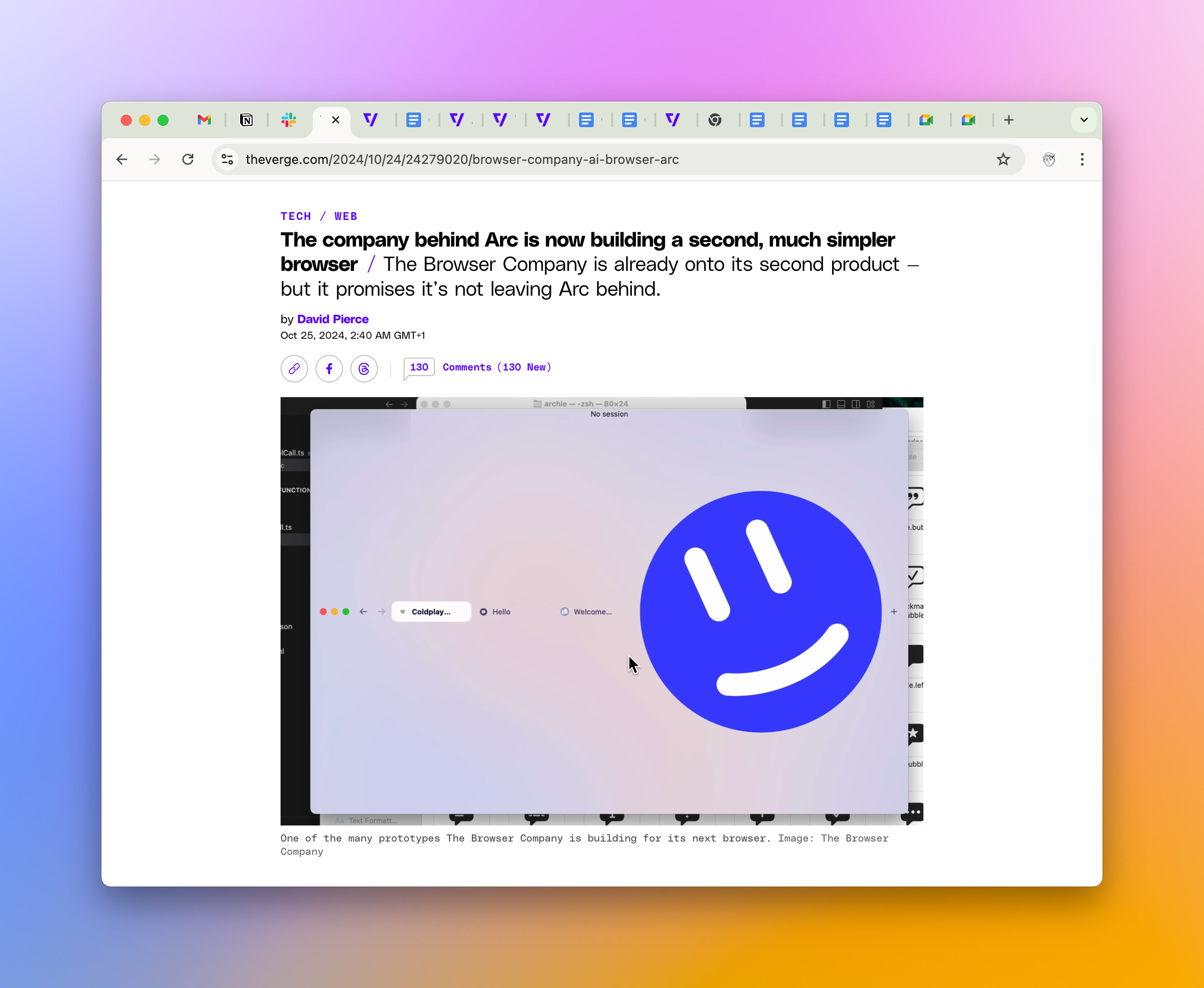Why Algorithmic Feeds Can Be Good
People like to say they prefer chronological feeds to algorithmic ones. The actual problem is we rarely see good algorithms built to help us and not drive engagement. But I’d love to see a social network giving me tools to catch up on the people I care about.

People like to say they prefer chronological feeds to algorithmic ones. I’ve seen countless prayers to Meta to re-enable the former option in their apps. And when Twitter made the algorithmic “For You” tab the default one, entire Chrome extensions were built, and petitions started to disable it.
I don’t think a pure reverse-order chronological feed is the best option. The actual problem here is we rarely see *good* algorithms built to help us and not drive engagement. But I’d love to see a social network giving me tools to catch up on the people I care about.
Strictly speaking, chronological feeds are based on an algorithm. A very stupid one. They work well when you only follow a few people, but they can be gamed. By design, they prioritize people who post more. People like professional bloggers and influencers. And if you only have a few minutes to check up on your contacts, you see a small slice of everyone’s recent posts – not necessarily the most important ones.
Kevin Systrom, Co-Founder of Instagram, who is now building Artifact, described their disadvantages in his interview with Alex Kantrowitz:
You would friend people, and your social network became your filter for relevant content. If I follow you and you post something, I see it. These networks grew to be slightly too large for that to be manageable. If, on Instagram, we just sorted your feed chronologically, the people that posted the most would get the most attention and people would self report seeing too much of one person while missing other people.
He talked on the same topic in his interview with Ben Thompson:
We used to say internally, “Your feed is already ranked, it’s just ranked by order by created at descending.” Who’s to say that that’s the correct ranking for actually getting to most of your friend’s content? <…> “Can we help you stay up to date on what your friends are doing on Instagram”? That was the core of when it made Instagram special, and it was getting totally lost in a chron-ranked feed, because your friend posted 8:00 PM and in between then and the next morning, the brands you follow, the influencers posted fifty times because they have a whole team to help them post, and that friend post was totally buried.
I agree with this assessment. In fact, it mirrors my own experience with Facebook and other early social networks. If you are using RSS, you’re seeing the same problems. If you try subscribing to a major news website, they will drown you in content, dominating everything else. And if you’ve been away for a week, you’ll probably glance at the last headlines and just mark everything as read.
(Two years ago, I wanted to build an RSS service that would rank articles and posts for you. Thankfully, they launched Artifact, and I just use it.)
In anthropology, there’s a concept called Dunbar’s number. It is a cognitive limit to the number of people with whom one can maintain stable social relationships. And Robin Dunbar himself estimated this number to be around 150. I’ve always felt that conventional social networks and chronological feeds break around this exact number of follows.
Some people (especially in tech) claim that you must manage who you follow much more strictly. Follow carefully, remove swiftly, and mute the ones who post too much noise. I did this myself. And there are two very clear problems:
- You clearly can’t expect everyone to do this.
- When you mute a person who posts too much, you lose them ‘forever’. Unless you manually visit their page and give them a second chance, they will never re-appear in your feed. Maybe they just went to Coachella but ultimately are still reasonable people?
Social networking apps have tried to solve this in different ways. A now-defunct Path only allowed you to be friends with 150 people (the same Dunbar’s number). This would lead to a weird dance of trying to find someone to throw away to make space for the new person you want to add. Others, like BeReal, solve it through their UI and by limiting the volume of content. All of these options seem too artificial.
Twitter’s previous algorithmic timeline was actually quite useful in terms of surfacing the stuff I might have missed and mixing it with just a few percent of potentially interesting authors I don’t follow. The reason I (and many people) dislike the current “For You” tab is that it’s pretty much a TikTok for text. It’s extremely addictive, but when I pull away I realize that I don’t care about any of these people.
A useful algorithm would work to surface things I shouldn’t miss from the people I already follow. No matter how long you were offline, it’d highlight posts you need to have a look at. One of the common criticisms of algorithmic feeds is people refreshing the webpage and losing their position. This can be solved if the algorithm tracks the “seen” status (just like RSS readers do), so someone who is a completionist could read everything.
That’s what makes me slightly hopeful for BlueSky. One of the reasons they weren’t satisfied with ActivityPub and decided to build AT Protocol is precisely because the former doesn’t support algorithmic feeds.
At Bluesky, we’re approaching this challenge from a marketplace perspective. Our goal isn’t to create every algorithm in-house, but to enable the developer community to bring new algorithms to users swiftly and effortlessly
***
Imagine being able, for the first time, to choose the algorithm building your personalized feed. Focusing on what you value. Mixing it with popular content or keeping it to the same list of N people you follow.
I don’t know who will actually ever build this. But it’d be wonderful.




